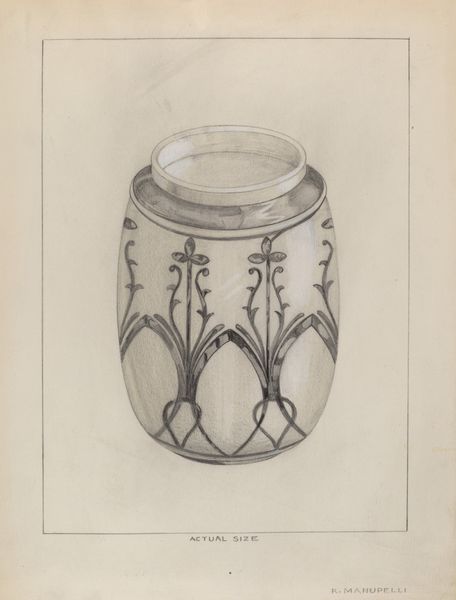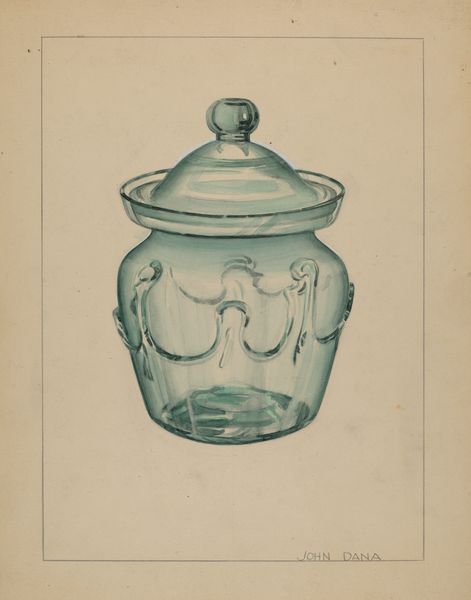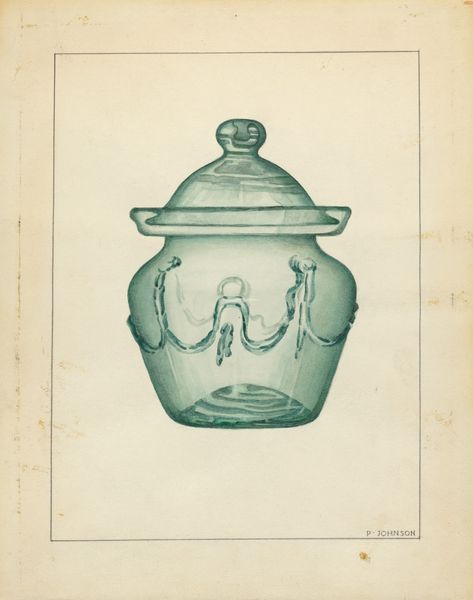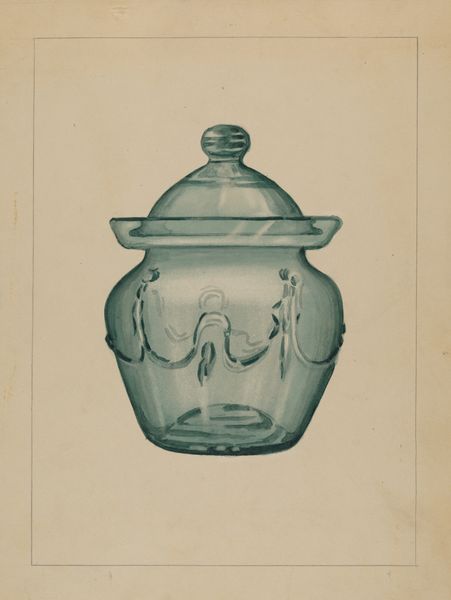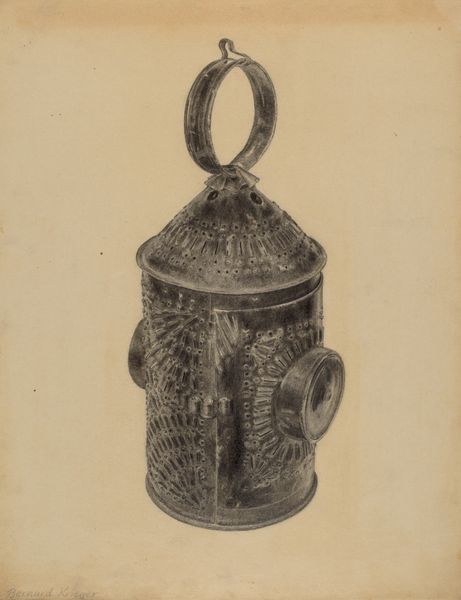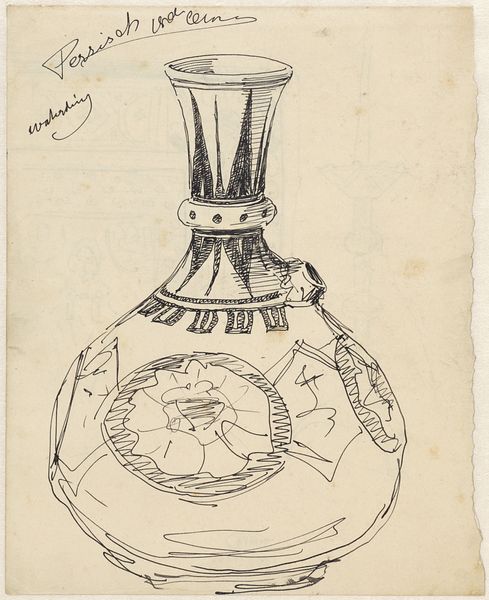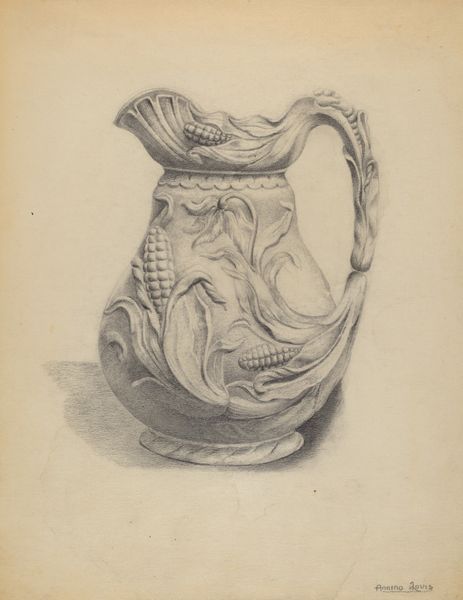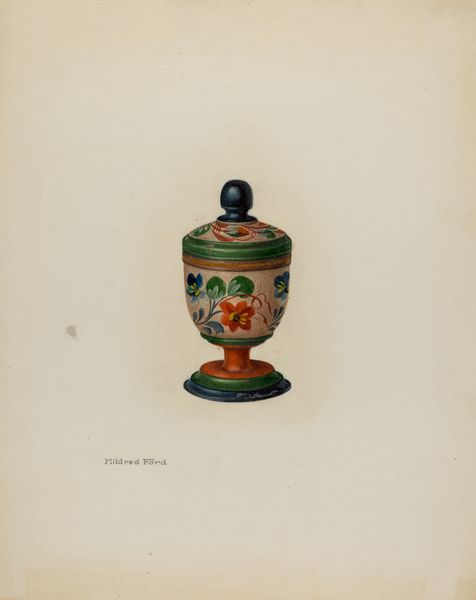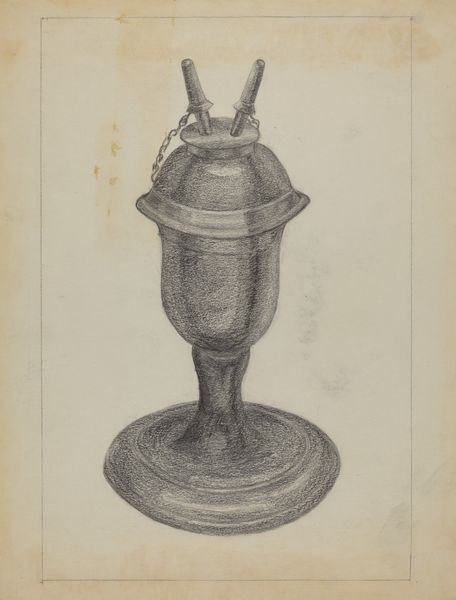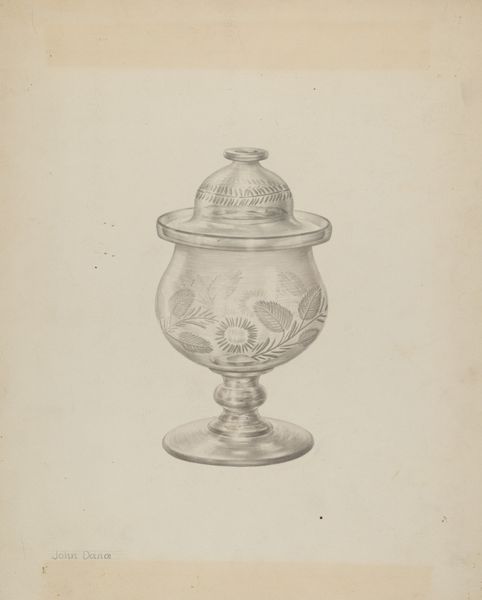
drawing, ink
#
drawing
#
ink
#
geometric
#
orientalism
Dimensions: height 160 mm, width 159 mm
Copyright: Rijks Museum: Open Domain
Editor: Here we have a drawing by Theo Nieuwenhuis titled "Vase with Tulip Decoration from Damascus, Sixteenth Century," created sometime between 1876 and 1951 using ink. It's a quick sketch, almost, but with remarkable detail. What strikes you about the piece? Curator: The linearity is compelling. Consider how the artist renders the curvature of the vase using solely hatching and contour lines. Note the clear differentiation in texture achieved purely through the density and direction of these lines. Editor: Yes, I see what you mean. The top decorative band seems quite intricate for a sketch. Curator: Precisely. The artist uses tightly packed curvilinear strokes to depict a dense pattern. Contrast this with the sparser, more gestural strokes used to indicate the tulips, and consider the subtle shifts in tonal value they create. Editor: So, it's all about the relationships between these different types of lines? The horizontal ones near the base versus the swirling patterns? Curator: Absolutely. And how they delineate form and surface. The cross-hatching implies depth and volume, especially at the base. Do you observe the artist's choice of a restricted tonal palette? It draws our focus to form. Editor: It’s interesting how the absence of color heightens our attention to the structural elements. I'm starting to see how much information is conveyed through these simple lines and patterns. Curator: Exactly. Through astute manipulation of line, the artist communicates form, texture, and even, arguably, cultural reference, as the style is termed Orientalism. It’s all there within the inherent structure. Editor: That gives me a fresh appreciation for how much information can be packed into what appears to be a simple drawing. Curator: Indeed. It underlines the potency of fundamental formal components in crafting a sophisticated artistic impression.
Comments
No comments
Be the first to comment and join the conversation on the ultimate creative platform.

